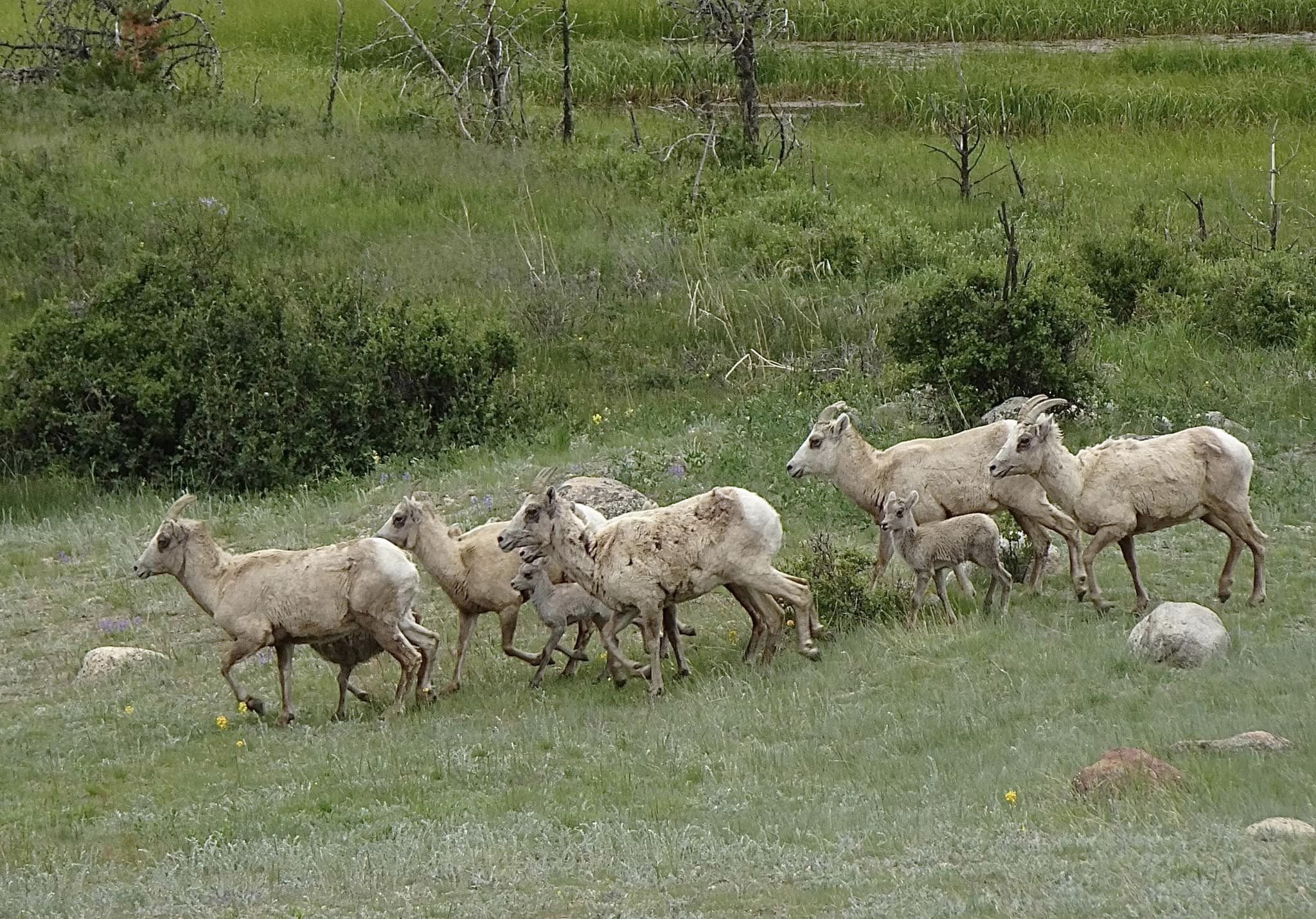Wildlife Wednesday -- Timing is Everything
By Andy Ames
What is the saying, “Time is of the essence?” That is the certainly the case for Mule deer at the moment. Breeding seasons are timed to allow the optimum chance of survival for offspring. For Mule deer and others that means giving birth late enough to avoid most cold and snow, while giving ample time to gain enough weight to carry them through their first winter. For the ungulates (hoofed animals) of the Estes Valley that optimal birthing time is right around the first of June. Those born too early face the risk of inclement weather and predation. (Increased risk of predation due to possible weaker state and less vegetation for hiding.) Late births can be risky for both the mother and fawn if they are not able to put on enough fat for the upcoming winter. There is another saying, “Timing is everything!”
A Mule deer buck pursuing a doe while her fawn looks on. With a 200 day gestation period, a doe bred in mid November would be born June 1. This photo was taken late last November so if she was bred at that time her fawn would be born in mid June. The weather and vegetation should be reliably good by that time but starts to cut it close in order to gain enough weight to withstand the following winter.
Elk have a long breeding season, or rut, starting as early as late August and continuing until mid October. With an approximately 250 day gestation period, an elk bred just after the fall equinox would be born around the first of June. Here we have a bull elk bugling to a couple of elk cows and a calf. Elk calves are 30-35 pounds and birth and can put on 150 pounds by their first fall.
The moose mating season overlaps with the tail end of the elk rut. Moose gestation is a week or two shorter than elk with their calves a few pounds lighter.
Bighorn sheep have the shortest gestation period of the Estes Valley ungulates at just 175-180 days. Bighorn hold off until December to start mating in order to make that optimum late May/early June time frame. Bighorn lambs are smallest of all at just 7-10 pounds at birth. Unlike deer and elk, however, bighorn lambs do not hide for protection from predators but must gain strength and agility quickly to keep up with the adult members of their herd. (The lambs in this photo are already a few weeks old).




